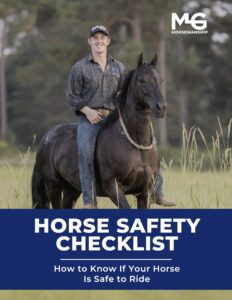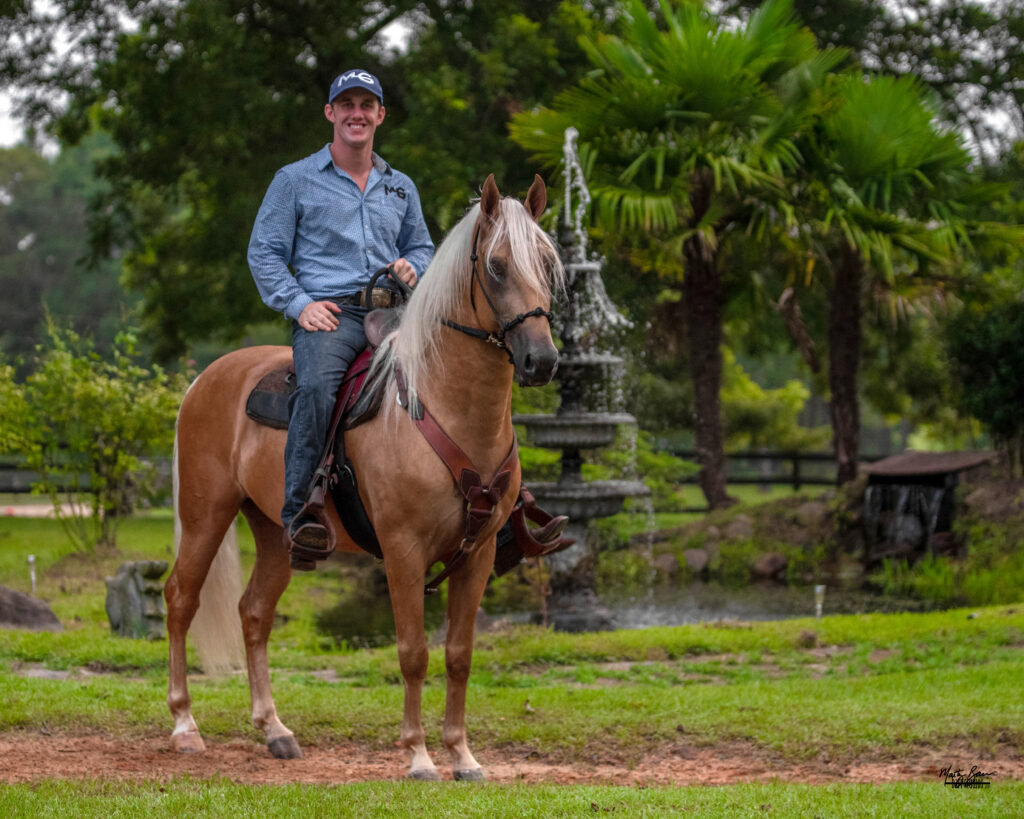Today we are learning how to approach obstacles with your horse!
Watch the Video Here or continue reading below!
INTRO TO APPROACHING OBSTACLES
Riding can be a thrilling experience, but when faced with approaching obstacles, it’s natural for both horse and rider to feel apprehensive. We’ll explore techniques to build confidence and overcome hurdles seamlessly. Remember, a key aspect of successful riding is maintaining control and ensuring your horse trusts you.
RELEASE, RELAX, AND SIT DEEP
Today, we delve into the art of conquering obstacles with your horse. I am going to emphasize the crucial role of understanding your horse’s natural instincts and reactions. By applying the right techniques, you can build a strong foundation of trust and control. Let’s embark on this journey of horse mastery together! When faced with an obstacle, our first instinct might be to tighten the reins. However, I am going to advise a different approach. Release the reins, sit deep in the saddle, and ground yourself. This establishes a foundation of trust between you and your horse.
The Power Of Controlling The Head
Controlling your horse’s head is paramount. Without it, he can only move laterally. Understanding this allows you to guide him effectively through any challenge. It’s a dance of give and take, maintaining a delicate balance of control.
Turning Towards Fear
Pro tip number 1: pressuring a horse over an obstacle is not about something physical it’s all mental. When encountering a new or daunting situation, the key is to guide your horse towards it, not away. By gently applying pressure, you encourage him to confront his fears. Remember, with control of the head, no obstacle is insurmountable. As your horse takes steps towards the unknown, continue to apply gentle pressure. This encourages him to seek solutions. Recognize when he’s actively searching for answers, and reward this effort with a timely release. A secure seat is the foundation of a skilled rider. By anchoring yourself in the saddle, you gain the stability needed to react effectively. This is the secret behind legendary cutter riders’ unshakeable sticky seat.
Tailoring Techniques to Your Horse
Rather than instinctively pulling on the reins, sink into your seat and engage your heels. This subtle shift in posture provides a clear signal to your horse, helping him refocus on the task at hand. Every horse is unique. Some may require minimal cues, while others need more assertive guidance. Learn to read your horse’s cues and adapt your approach accordingly. It’s a dance of communication, where you lead and he responds. For horses that are less responsive or dull do not sit and kick them over and over again. Use a popper or tap with a whip on their hindquarters as you are turning them into the obstacle so they can’t run from you. Apply pressure strategically to guide their movements. This helps them engage with the task, rather than remain passive.
Embracing The Challenge
Pro tip number 2: when it comes to obstacles, bigger often means easier. A larger surface area provides more room for you to maintain pressure, keeping your horse focused. Seek out wide-ranging challenges to build confidence and skill. Remember, horses learn from release, not pressure. Ensure that when your horse makes progress, the release is deliberate and meaningful. This reinforces positive behavior and encourages him to seek the right path.
Never Turn away from the obstacle
Pro tip number 3: never ever turn away from your obstacle. When faced with a hesitant or spooked horse, our first reaction might be to retreat and attempt a different approach. This common response can inadvertently teach our horse that if they feel fear, they have the option to turn away. Picture this scenario: you and your best friends are out on a trail, enjoying your favorite beverage, sweet tea, when suddenly your horse starts heading in the opposite direction. We’ve all been there, and it’s not an ideal situation!
Face Their Fear Head On
Instead of succumbing to this instinct, take a deep breath and remember the importance of facing the obstacle directly. Even if it means diverting 20, 50, or even 100 yards off the intended path, keep turning into the fear. This deliberate action creates a powerful message for your horse – every move they make will be met with a redirection back towards the challenge. Consistently facing the obstacle transforms your horse’s mindset. They begin to associate any movement with a return to the task at hand. This repetitive pattern shifts their response from reactive to contemplative. Rather than bolting off in another direction, your horse will pause, allowing you the time and opportunity to process and address their fear. This freeze response becomes a precious window to guide them through their apprehension.
Conclusion OF APPROACHING OBSTACLES
In wrapping up, it’s essential to remember that turning towards challenges and maintaining control are the keys to success. By never turning away from obstacles, you’re setting the stage for a remarkable transformation in your horse’s behavior. They become attuned to your guidance, trusting that you will lead them through any challenge they encounter. This approach not only enhances your safety on the trails but also deepens the connection between you and your four-legged friend. Go out and try approaching different obstacles, and let’s continue this journey together toward your equestrian goals!
Check out more free training resources HERE!
HOW SAFE IS YOUR HORSE?
Can you control every part of his body, even if he’s scared or unsure?
There are some specific things that I believe every horse should be able to do before they are considered completely safe to ride. So that you can see how safe your horse is to ride, I’ve created this FREE Horse Safety Checklist.





